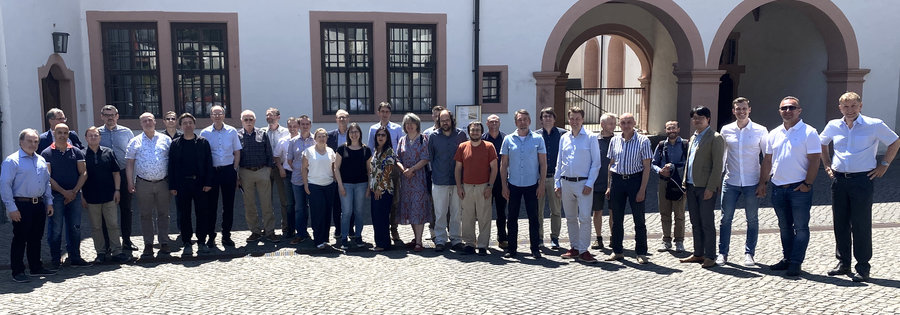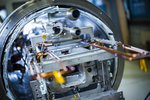Final sprint: Installation of the large FAIR ring accelerator SIS100 approaches
21.08.2023 |
While the structural works on the construction site is progressing and the development and production of the high-tech components for the future FAIR accelerator center is underway, the next decisive steps are being taken for the large FAIR ring accelerator SIS100: The assembly of the accelerator machine in the newly constructed buildings is being prepared, and the final spurt towards the installation start of the SIS100 has begun. The persons responsible for the relevant subprojects SIS100/SIS18 and SMG (Site Management) recently met for a closed meeting focusing on this topic. The installation start is scheduled for the first quarter of the coming year.
A plan has already been drawn up so that the installations can be carried out precisely and accurately, step by step. Numerous different aspects, such as delivery windows and the type of magnets, must be exactly coordinated and logistically mastered so that the accelerator components fit together precisely in the shell like a gigantic puzzle.
The start of the SIS100 installation will be in the straight of the western sector 4. From there, the installation will continue clockwise toward the sector 3 arc. While the straight line in sector 4 is dominated by high-frequency acceleration systems, the arc consists largely of superconducting magnet modules. Due to the supply situation of the quadrupole modules required for beam focusing, the superconducting dipole pairs are first set up in the arc and interconnected. They guide the beam onto the hexagonal "circular path" of the SIS100.
The installation begins in the straight section with the positioning of the superconducting bypass lines, which were manufactured as a Polish Inkind contribution. The bypass lines transport the liquid helium required for magnet cooling and the superconducting main bus bar system passing the room temperature components of the straight sections. The bypass lines are first moved to a parking position, from which they are then moved and connected to the quadrupole modules after delivery is complete. Gaps are left in the first assembly cycle for the quadrupole modules to be integrated in the second cycle.
Since the tunnel is still in settlement motion, the later integration of the quadrupole modules also leaves freedom of movement for fine adjustment. The extraction straight in sector 5 will initially be kept open for equipping the high-energy beam transport system, including heavy magnet systems. The expansion of the SIS100 tunnel with the technical building equipment, double floors and routes is in full swing. In the second half of 2023, cable pulling work will be carried out with a focus on sector 4.
On the home stretch until the end of the year, extensive work still needs to be completed in preparation for assembly. For example, various smaller subassemblies for closing the UHV (ultra-high vacuum) system have to be procured, pre-integration work completed and comprehensive documentation prepared for each subassembly. Then the installation itself can begin, another crucial milestone and a sign of the steady progress being made in the construction of FAIR.
In parallel, science is also taking major steps towards future research at FAIR. The FAIR experimental program is currently being defined more and more precisely, for example during research stays of high-ranking scientists on site at GSI and FAIR or in the collaborations of the large experiment pillars. Already today, "FAIR-Phase 0" offers outstanding experimental opportunities. In the future, the FAIR accelerator facility will deliver high-energy ion beams of highest intensities. In combination with the Super-Fragment-Separator, storage rings and cutting-edge instrumentation, it will provide worldwide outstanding research opportunities. (BP)















